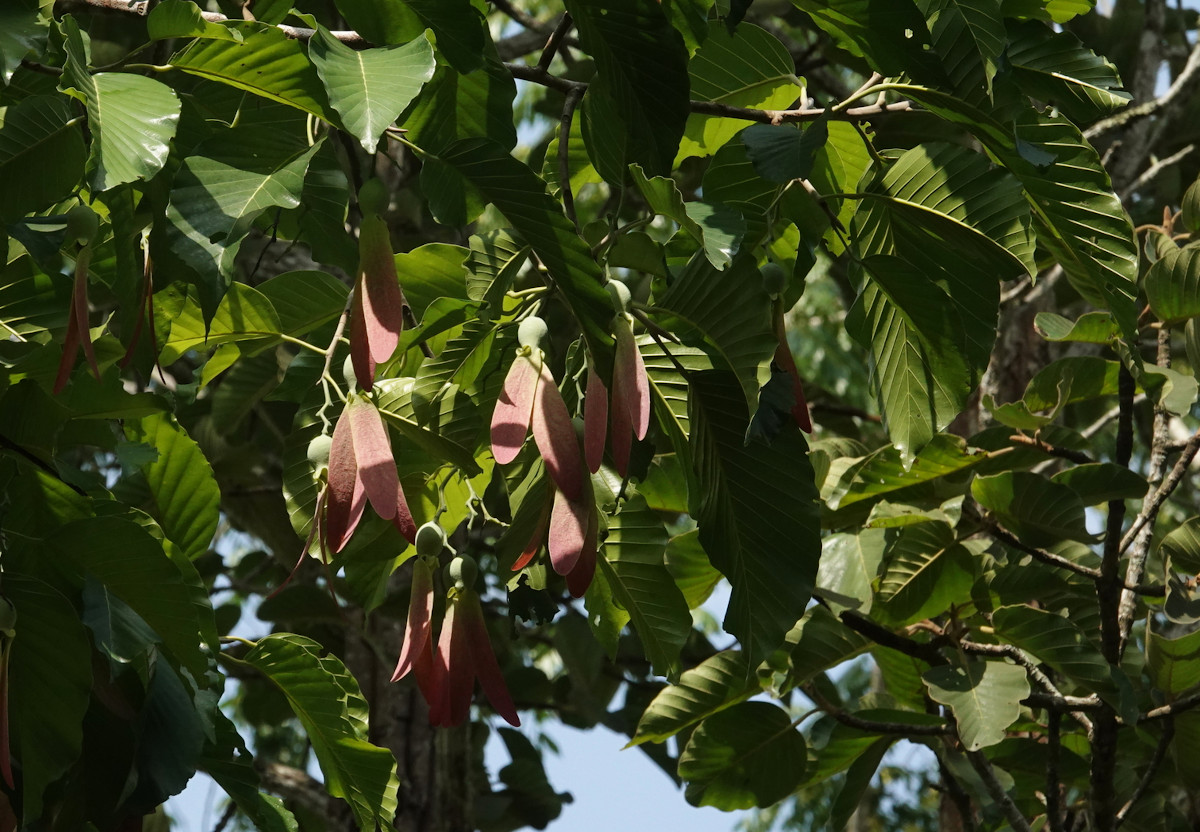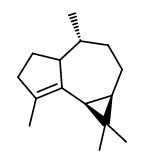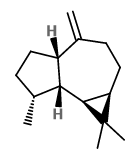Dipterocarpus turbinatus C. F. Gaertn. - Dipterocarpaceae - gurjun, gurjan, Ostindischer Zweiflügelfruchtbaum, Ostindischer Gurjunbalsambaum
Tree, up to 35m tall, native from India to China and Thailand, Vietnam; bark gray to dark brown, longitudinally fissured and flaky; leaves ovate-oblong, 20-30cm long, leathery, base rounded or somewhat cordate, margin entire or sometimes sinuate, apex acuminate or acute; racemes axillary, 3-6-flowered. http://www.efloras.org/florataxon.aspx?flora_id=2&taxon_id=200014263
„The resin of the tree (known internationally as East Indian copaiba balsam) is used in India, where it is the source of kanyin oil and gurjun oil, and in Cambodia, where the almost solid resin is especially used to prepare torches… In herbal medicine, the plant has been traditionally used for treating gonorrhea, leprosy, psoriasis and other skin diseases.“ wikipedia
„All Dipterocarpus species produce a high proportion of oleoresins which come under various local names such as gurjan oil (India), kanyin oil (Burma) and minyak keruing (western Malesia). A well-known oleoresin comes from D.turbinatus which is the principal source of 'kanyin oil' in Burma and 'gurjan oil' in Bangladesh and India. The best yielding species are Dipterocarpus cornutus, D.crinitus, D. hasseltii, D. kerrii and D. grandiflorus (Malesia), D. turbinatus and D. tuberculatus (India, Bangladesh, Burma), D. alatus (Bangladesh, Andamans, Indochina) and D. grandiflorus (Philippines)… A pale yellow oil with a balsamic odour is obtained (yield 46%) through steam distillation of the oleoresin… The commercial gurjan oil is the oleoresin mixed with small quantities of oleoresin from Dipterocarpus alatus, D. costatus and D. macrocarpus. It is a viscid fluid, highly florescent, transparent and dark reddish brown in colour when seen against the light. It oxidises when exposed to the atmosphere. The essential oil consists of two distinct sesquiterpenes, alpha and beta gurjunene… … The Pharmacopoeia of India 1868, officially describes it as a stimulant of mucous surfaces, particularly those of the genito-urinary system, and as diuretic (Watt 1899)… In European medicine gurjan oil was mainly used as an adulterant for copaiba.“
[Appanah, S., & Turnbull, J. M. (Eds.). (1998). A review of dipterocarps: taxonomy, ecology, and silviculture. Cifor., 188] PDF
A commercial sample of gurjun balsam oil (origin Malaysia) contained α-gurjunene (68.4%) and alloaromadendrene (12.9%) as main components. EO (Malaysia) GC-MS (stillpointaromatics) PDF
„Gurjun balsam is an oleoresin exuded from species of Dipterocarpus, Diptorocarpaceae, originated in the forest regions of Southeast Asia. This oil is a pathological product formed after incisions or other damage to the bark of the trees. Historically, this oil is known for its use in the adulteration of some essential oils such as ylang-ylang, patchouli, vetiver, and others. Gurjun balsam consists of 60 to 80% of an essential sticky oil used in perfume for its sweet, woody, balsamic aroma (Bombarda et al., 1997). In the essential oil of Gurjun balsam obtained from Dipterocarpus dyeri, a high concentration of α-gurjunene was found, and various sesquiterpenes, including calarene, alloaromadendrene and γ-gurjunene (Ehret & Ourisson, 1969). Rücker & Hefendehl (1978) also found guaianic alcohol in this balsam; guaien-(5)-ol-(11)…“
[True and common balsams., Custódio, D.L., Veiga-Junior, V.F., Revista Brasileira de Farmacognosia, 22(6), 2012, 1372-1383] PDF
About commercial qualities of gurjun balsam: „Gurjun is primarily cultivated in the southeast asia region (Malay Peninsula, Sumatra, Borneo, the Philippines, Java, Bali, Lombok and Sumbawa). It is, however, important to note that the oils obtained from Gurjun trees in the the above listed countries have different constituents. The Indonesian variety of Gurjun oil has Alpha copaene (Min 40%) as it’s main component. The other quality from Malaysia/Vietnam/Cambodia is different as the main constituent is Gurjunene (Min 40%).“
http://vanaroma.com/product/gurjun-balsam

Dipterocarpus turbinatus, Yunnan, China (2023) © amochengjun CC BY-SA 4.0 inaturalist.org

Roxburgh, W., Plants of the coast of Coromandel, vol.3 t.213 (1819)
plantgenera.org

